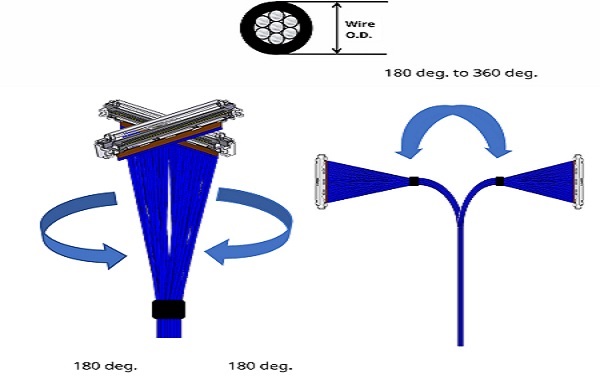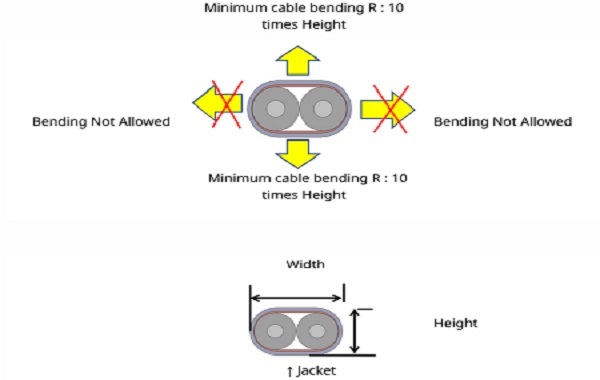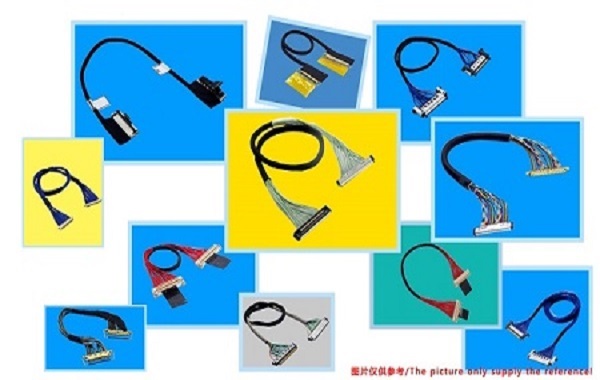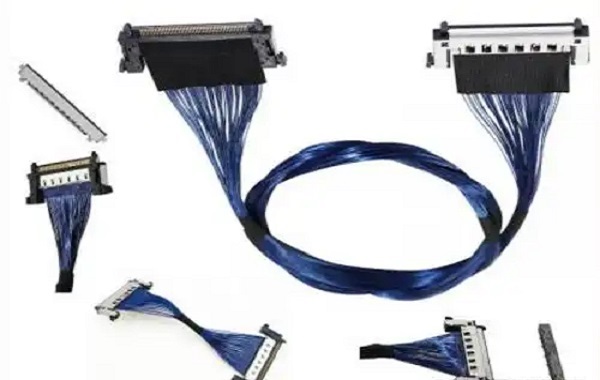Categorization:Harness Component
In high-speed signal transmission systems, cable design not only needs to pay attention to electrical performance but also must emphasize the mechanical properties of the cable. Reasonably controlling the cable's bending radius, flexibility direction, and torsion capability directly affects the long-term reliability and signal integrity of the product. Micro-coaxial cables and twin-axial cables, as two types of commonly used high-speed cables, have different requirements for mechanical properties, and strict adherence to design and assembly is required.
Micro coaxial cable mechanical performance requirements
Micro coaxial cable has a compact structure, good flexibility, and excellent shielding performance, and is widely used in portable electronic devices, medical equipment and other fields. Its main mechanical requirements include:
• Minimum bending radius: refers to the smallest radius at which the cable can be bent repeatedly without causing physical damage or a decrease in signal performance. The recommended value is usually 6 times the cable's outer diameter, but the specific number should be confirmed according to the model and manufacturer's specifications.
• Twisting Capability: Microcoaxial cables can allow a certain degree of twist along the longitudinal direction, making them suitable for applications that require repeated twisting. The twisting capability is typically expressed in terms of the allowable twist angle per meter or the allowable twist angle per section, with specific values to be referred to in the product specifications to avoid conductor fatigue or insulation damage.
The mechanical performance requirements for a two-axis cable
The twin-axial cable is mainly used for high-speed differential signal transmission, such as DisplayPort, USB4, or PCIe over Cable standards. Its mechanical performance characteristics are as follows:
• Minimum bending radius: The double-axis cable allows bending in the direction of cable thickness, and the generally recommended value is 10 times the height of the cable to ensure that the conductor spacing and impedance structure are not damaged, thus ensuring signal integrity.
• Flexibility and torsion limitations: Unlike micro-coaxial cables, twin-axial cables do not allow lateral bending or twisting along the longitudinal direction. Lateral bending or twisting may destroy the relative spacing between differential pairs, leading to impedance discontinuity, increased signal crosstalk, and even physical damage.
The importance of mechanical property control in harness design
In the design of high-speed signal cable harnesses, the rational selection of cable types and strict adherence to their mechanical bending, flexibility, and torsion requirements are crucial for product durability and signal transmission performance. It is recommended to always refer to the detailed technical specifications provided by the cable manufacturer during the design and assembly process, especially in applications with frequent movement or compact wiring. A strict control of cable bending and torsion conditions is even more critical. Through the scientific control of the mechanical properties of micro-coaxial cables and dual-axis cables, the long-term reliability and stability of the high-speed signal transmission system can be effectively guaranteed.

In high-speed signal transmission systems, controlling the mechanical properties of cables is a key factor in ensuring signal integrity and system reliability. Microcoaxial cables, with their flexibility and shielding advantages, are suitable for environments with multiple bends and dynamic movement; dual-axis cables, on the other hand, support high-speed differential signal transmission with high impedance consistency and low crosstalk characteristics. Designers should fully consider the bending radius, twisting direction, and flexibility constraints at the initial stage of product development to avoid structural stress from damaging the signal path. Through rigorous mechanical property design and verification, the stability and lifespan of the wiring system can be significantly improved, providing a solid and reliable physical foundation for high-speed interconnect systems.
I amSuzhou Huichengyuan Electronic TechnologyLong-term focus on the design and customization of high-speed signal cable harnesses and ultra-fine coaxial cable harnesses, committed to providing stable and reliable high-speed interconnect solutions. If you have related needs or want to learn more, please contact us:Manager Yin 18913280527 (WeChat same number)。